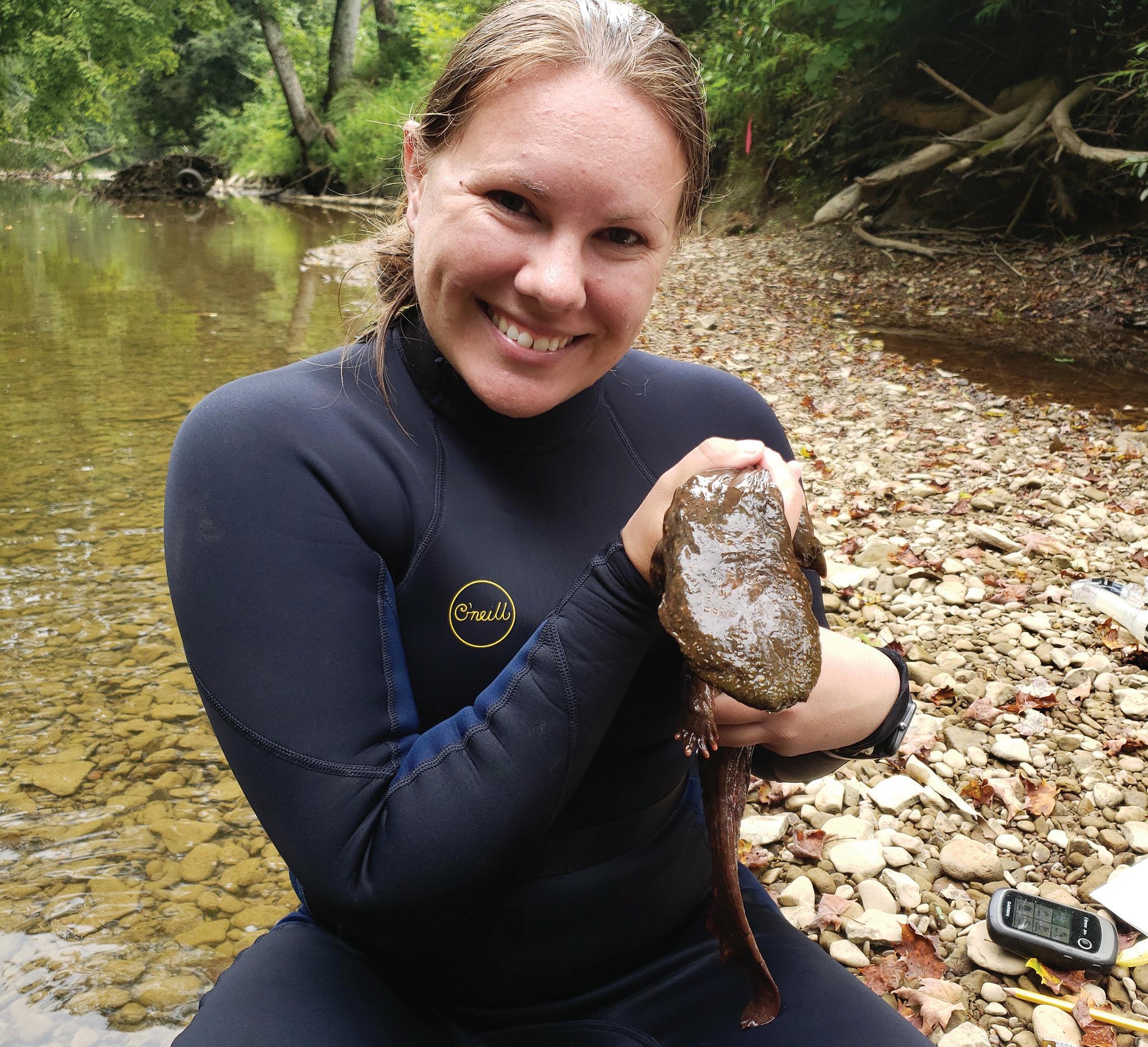
3 minute read
GRADUATE CORNER
Sarah Tomke, UK FNR PhD Student
As a fourth-year PhD candidate in the Forestry and Natural Resources department, I am studying the current distribution and population status of an imperiled aquatic salamander species in Kentucky, the Eastern hellbender. Eastern hellbenders are declining rapidly across their range in the eastern United States due to habitat and water degradation; however, we know very little about where they exist or how their populations are doing in Kentucky.
To answer these questions, I collected environmental DNA (eDNA) samples from over 90 sites across the state to determine if hellbenders are present or absent at those locations. I then conducted snorkeling surveys at our eDNA-positive sites in an attempt to find these elusive and cryptic animals. If a hellbender was found, our research team weighed and measured the individual to approximate its age and inserted a PIT tag (similar to a microchip) so we could identify it later. Additionally, with the help of the Kentucky Department of Fish and Wildlife Resources, we placed artificial nest boxes at our sites to determine if hellbenders are successfully reproducing in these streams.
Help protect hellbenders in Kentucky by keeping our streams clean and beautiful. If you see a hellbender, safely release the animal back where you found it and report it to the Kentucky Department of Fish and Wildlife Resources.

Kai Davis, UK FNR Master’s Student
Reforest the Bluegrass
(RFB) is a local socioenvironmental initiative that aims to expand Lexington’s urban forest and protect local waterways by planting native trees. This initiative has been beneficial for the awareness of environmental health in and around the city and in building support from the public. There are clear benefits for the city and the people within, however, there is minimal insight on the impact on wildlife or the full benefit that this reforestation initiative could potentially provide. Urbanization is a global issue that is reducing wildlife habitat, and because of this, wildlife species are utilizing urban areas for habitat, safety, and sustenance. Birds are one such class of animals that are common throughout cities and may be affected. Habitat quality for resident and migratory birds is highly dependent on habitat patch size, human disturbance, and landscape context.
My project explores how more than two decades of this reforestation effort around Lexington has benefited birds in this urbanized landscape. In late 2021 and early 2022, we successfully deployed 18 automated recorder units in RFB plots that nearly spanned the chronological range of reforestation plantings, and we are sampling two older, urban forest blocks as controls.
My project can provide insight into how RFB is impacting and potentially benefiting avian species in Lexington, as well as plant seeds for future reforestation efforts.







